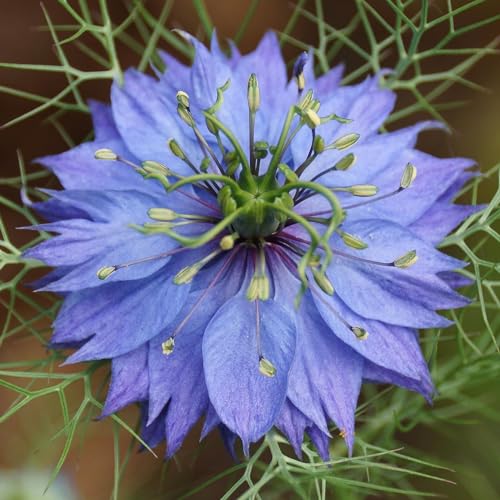How to grow nigella – for flowers that offer unique hues and structural seedheads
Sow love-in-a-mist seeds in fall for a charming display in summer

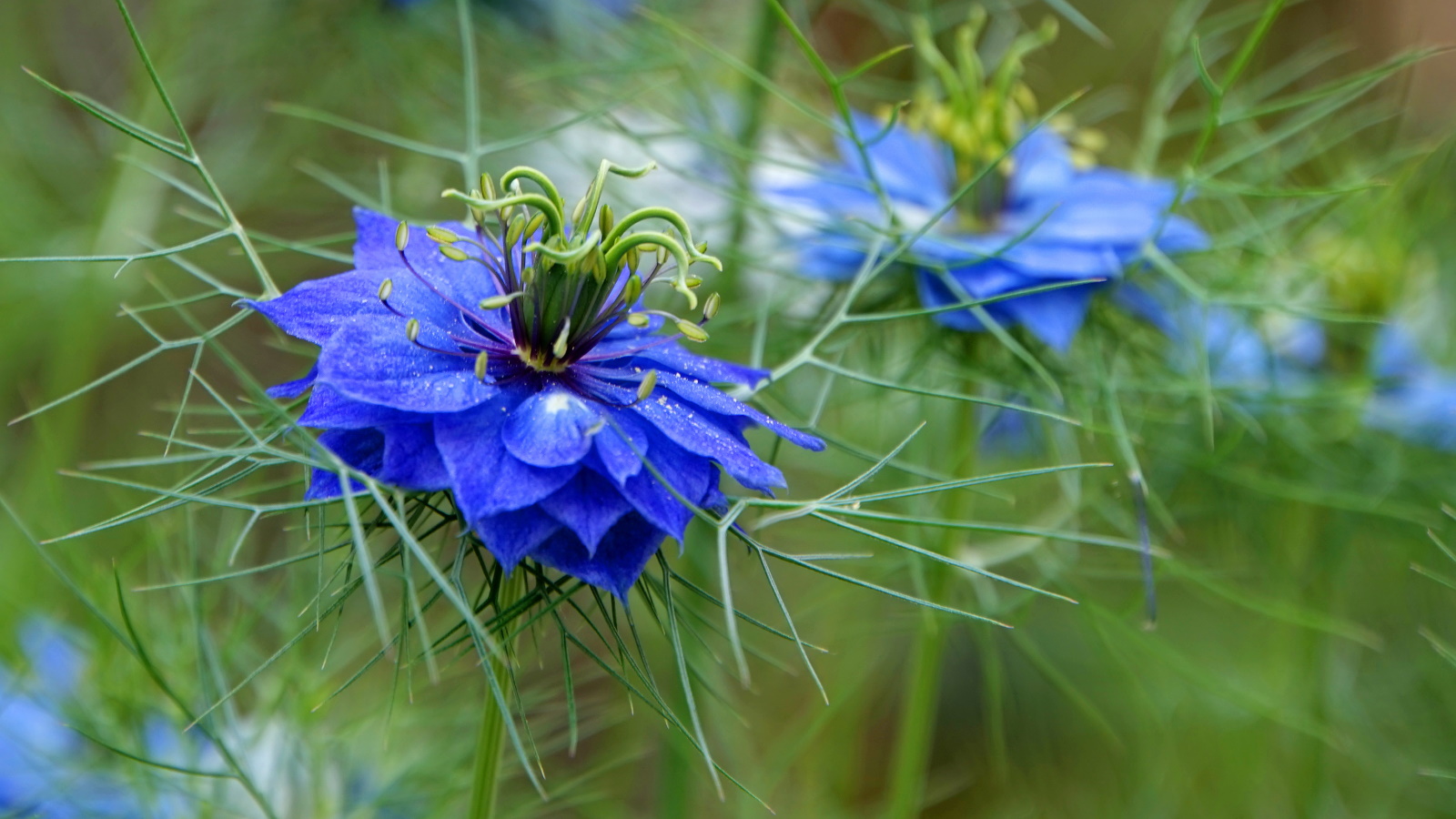
While you may assume that fall is time to slow down in the garden, this is actually the time of year you should be getting your yard ready for the warmer months next year. This includes getting ahead of the floral display you wish to showcase in spring and summer.
One of the flowers to sow in fall that you should add to your list is nigella, or love-in-a-mist. Arguably, nigella is most popular as a blue flower, but this beautiful bloom also comes in creamy hues of pink and white. It flowers through the summer season and is also popular as a cut flower.
The good news about growing nigella is that once it's well-established in your yard, it's likely to return due to its self-seeding nature. However, if you haven't yet grown nigella, but are keen to have this whimsical-looking plant in your yard, we've compiled an expert guide for you to follow.
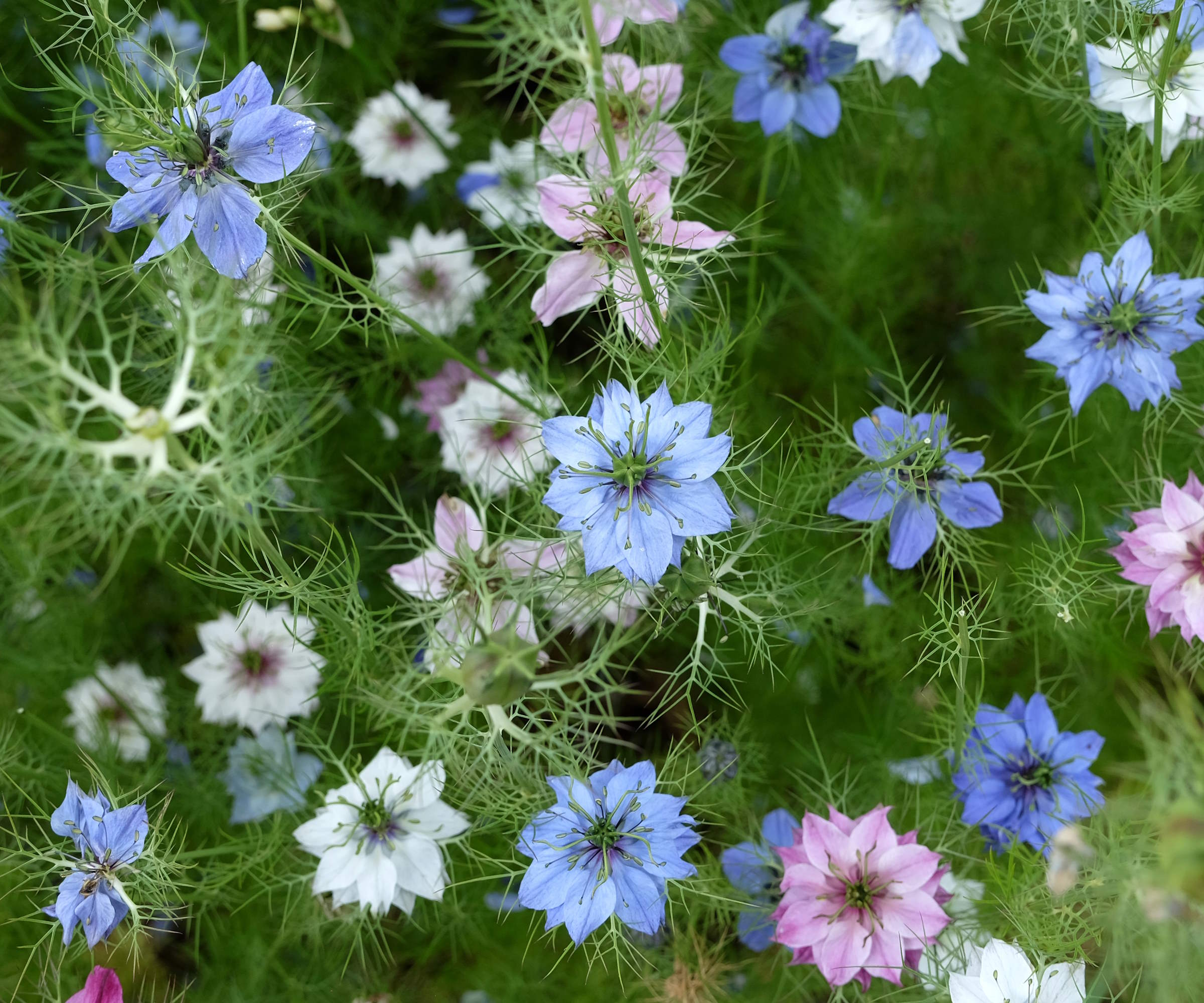
How to grow nigella
Whether you're planning a cut flower garden or simply want to brighten up your summer containers, nigella is one of the easiest and most versatile blooms to choose from Not sure where to get started? Here's everything you need to know about growing nigella.
Things to consider when growing nigella
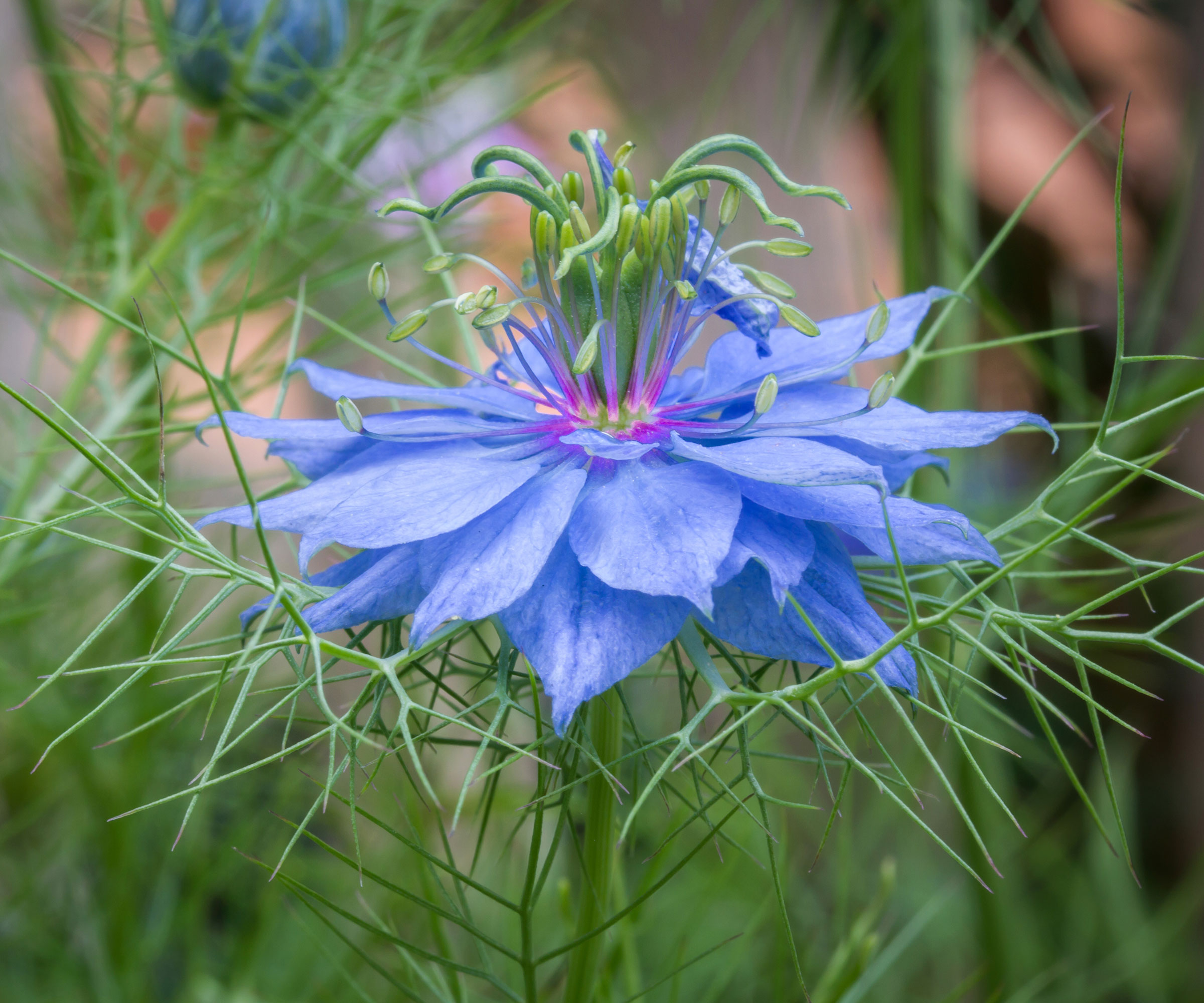
Before getting started with sowing nigella seeds, it's important to know some basics.
'These types of flowers are most commonly known as hardy annuals. In most zones, hardy annuals perform best when fall sown the year prior to blooming,' notes Meredith Bishop, sustainable flower grower and owner of Bloom and Bounty.
They grow best across US hardiness zone 2 to zone 11 and benefit from seed stratification, that is exposing your seeds to a period of cold before sowing. 'It prefers a cold stratification in order to germinate and take root,' Meredith explains.
Design expertise in your inbox – from inspiring decorating ideas and beautiful celebrity homes to practical gardening advice and shopping round-ups.
One of the greatest joys of these flowers is that they're among the best self-seeding flowers. 'Nigella self-seeds easily, so once it blooms, you’ll likely get more the following year,' says Juan Palacio, the CEO of BloomsyBox.
If you aren't bothered about where nigella grows in your outdoor space, this can be a big advantage as you don't need to sow them again each year. However, be aware that they might regrow in unwanted places.
They're also cut-and-come-again flowers, so they will produce new blooms after being cut. However these flowers are annuals, so will die back at the end of the season and won't return unless you have allowed them to self-seed.

Juan Palacio is the founder of BloomsyBox, a Miami-based floral subscription company. BloomsyBox has made it onto the prestigious Inc. 5000 list of the fastest-growing companies in the US for two consecutive years. To ensure the sustainability of his business, Juan has returned to his roots in South America to cultivate relationships with sustainable flower farms.
Nigella grow guide
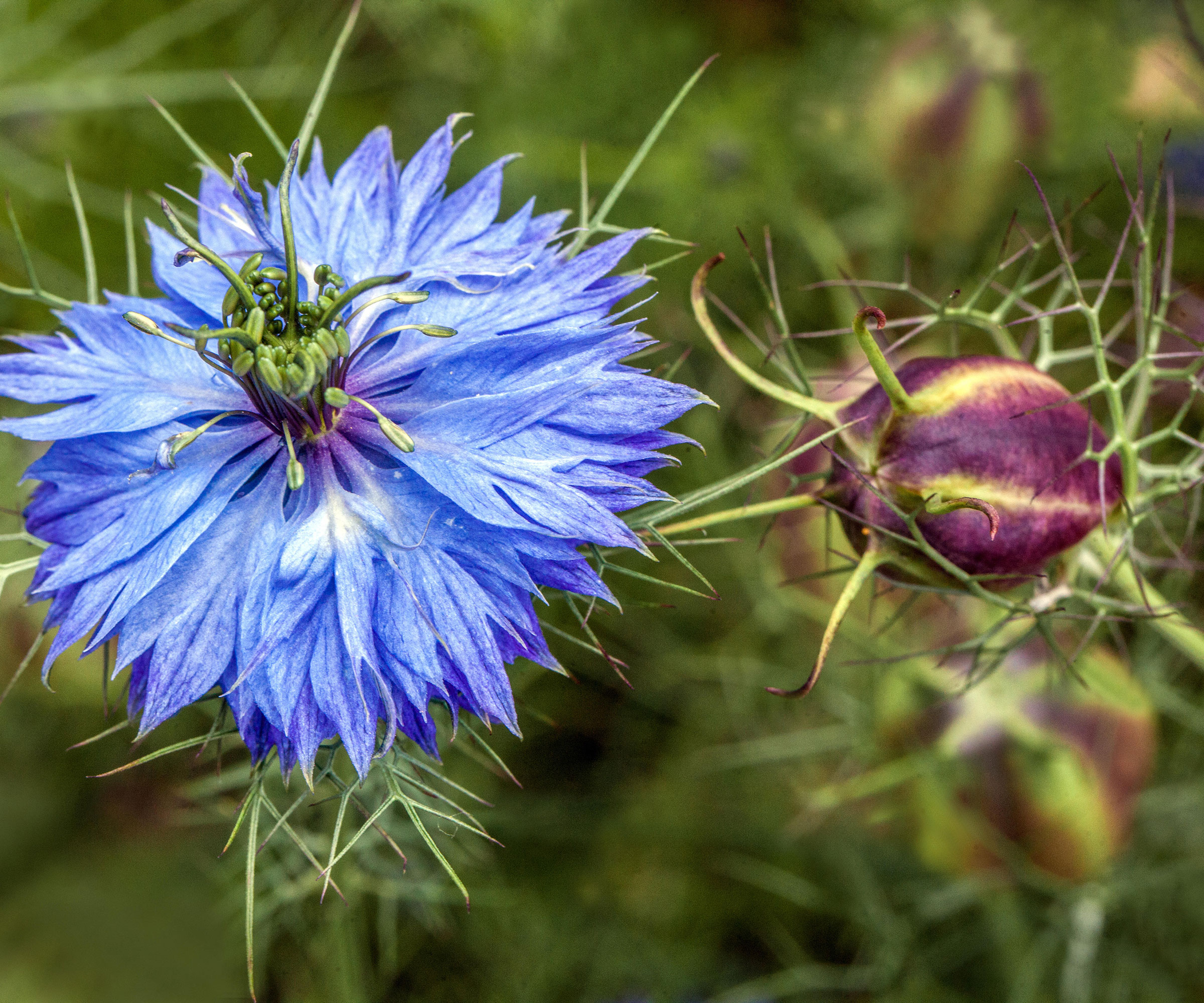
- Soil: Nigella flowers will grow in nearly any soil, so long as it is well-draining as they don't like to be overly wet. 'Depending on your soil, you may need to amend the planting bed with compost prior to sowing hardy annuals as seeds will not germinate in hard, packed soil,' says Meredith. You can add your own compost that is rich in phosphorus and potassium to encourage healthy blooms. Meredith also advises getting rid of weeds from flower beds before amending your soil. 'You can then sow the seeds 1/8 inches deep and cover them very lightly with soil,' she adds.
- Watering: After you've sown your nigella seeds, it's important to keep moisture levels consistent to aid germination. Not doing so is a seed sowing mistake. 'The importance of consistent moisture in germination cannot be overstated!' says Meredith. Once your nigella flowers have established, continue to keep moisture levels consistent, but take care not to let the soil become waterlogged. Using this soil moisture meter from Amazon can help you identify when it's time to water your plants.
- Light: You also need to make sure you're growing your nigella flowers in an optimal position so they receive sufficient light. Like many other summer annual flowers, nigella does best in a full-sun position where it receives around six to eight hours of sunlight a day.
- Fertilizing: Nigella flowers don't necessarily need a fertilizer if they're growing in a rich soil. However, if you have a poor soil quality, you might wish to add this all-purpose plant food from Amazon to boost the nutrients available for your flowers.
- Pruning: 'Uncut blooms will transform into interesting striped seedpods that are just as beautiful in arrangements as their flower counterparts. Pods also dry incredibly well,' notes Meredith. However, if you don't wish to let nigella go to seed, you will want to cut them right back just before they finish flowering. 'Keep cutting consistently so that the plant continues to make more flowers instead of going to seed,' Meredith advises. Avoid pruning mistakes by using essential gardening tools, like these pruning shears from Amazon, to get the job done.

Meredith Bishop is a sustainable flower grower specializing in old-world blooms grown from seed in her gardens in urban Nashville, Tennessee. She also operates a retail design studio in Nashville, and enjoys teaching, speaking and writing about all aspects of flower gardening.
FAQs
Does nigella need staking?
Nigella stems can grow quite long, around 24-28 inches, which can flop over from the weight of the flower head. While it isn't essential, you might consider staking nigella flowers to get them to stand up straight. Alternatively, sowing nigella seeds closer together can enable them to support each other as the stems grow taller.
The unique, bright and pastel colors of nigella also make them a popular choice for flower pressing. Or, leave your nigella flowers so you can collect seeds from their seedheads to sow again in a more intentional place. Check out our list of other plants you shouldn't deadhead so that you can enjoy your plants for longer into fall.

Tenielle is a Gardens Content Editor at Homes & Gardens. She holds a qualification in MA Magazine Journalism and has over six years of journalistic experience. Before coming to Homes & Gardens, Tenielle was in the editorial department at the Royal Horticultural Society and worked on The Garden magazine. As our in-house houseplant expert, Tenielle writes on a range of solutions to houseplant problems, as well as other 'how to' guides, inspiring garden projects, and the latest gardening news. When she isn't writing, Tenielle can be found propagating her ever-growing collection of indoor plants, helping others overcome common houseplant pests and diseases, volunteering at a local gardening club, and attending gardening workshops, like a composting masterclass.
